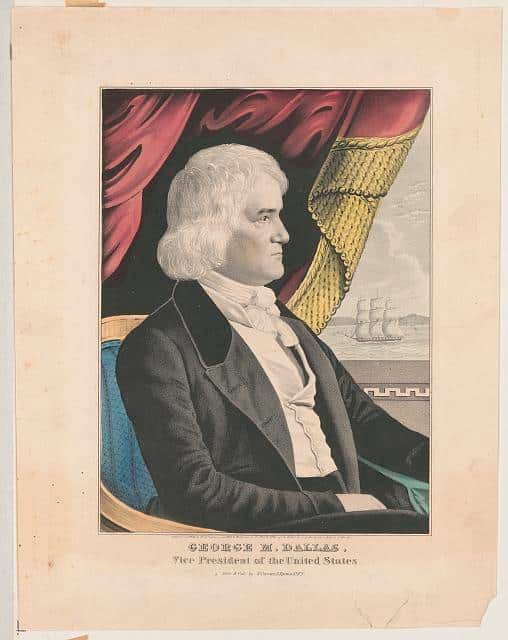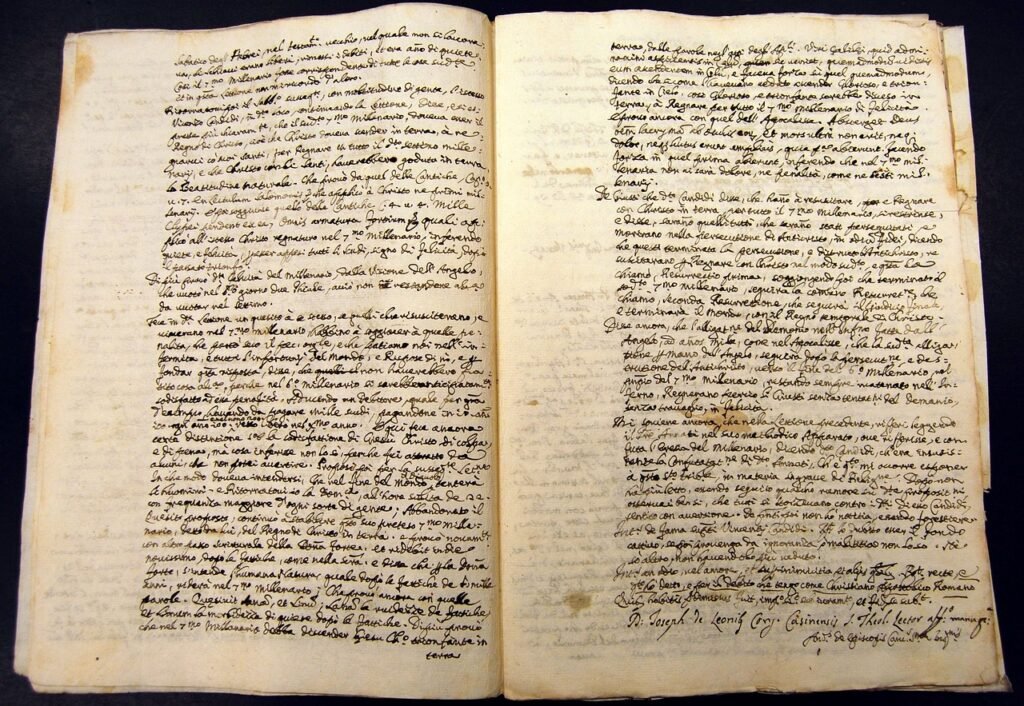




George M. Dallas
Early Life and Education
George Mifflin Dallas, the 11th Vice President of the United States, was born on July 10, 1792, in Philadelphia, Pennsylvania, to a prominent family. His father, Alexander J. Dallas, was a noted politician who served as the U.S. Secretary of the Treasury under President James Madison, while his mother, Arabella Ball, was of British descent. The Dallas family was well-connected in both political and social circles, and young George benefited from this environment, gaining access to influential figures and important educational opportunities (Rothman, 2012).
Dallas attended the prestigious The Episcopal Academy in Philadelphia before enrolling at the Princeton University, where he graduated in 1810 at the age of 18. Princeton provided him with a strong foundation in classical studies, which laid the intellectual groundwork for his future in law and politics. While at Princeton, Dallas was noted for his academic achievements, but it was his participation in campus debates and discussions that foreshadowed his future political career (Freeman, 2013).
After graduating from Princeton, Dallas went on to study law under his father’s tutelage. He was admitted to the Pennsylvania Bar in 1813 and soon began practicing law in Philadelphia. His legal career flourished, and by the early 1820s, Dallas had developed a reputation as a highly capable lawyer with a deep understanding of constitutional law (Rothman, 2012).
Early Political Career
George Dallas’s early political career was strongly influenced by his family’s political legacy. His father’s work as a public servant provided Dallas with firsthand exposure to national politics, and by the early 1820s, he was engaged in state and local politics in Pennsylvania. His first major political office was as a member of the Pennsylvania State Senate from 1824 to 1828. His experience in the state legislature allowed him to gain significant exposure to political processes and governance, which was crucial for his later rise on the national stage (Freeman, 2013).
During his time in the Pennsylvania State Senate, Dallas was an advocate for internal improvements, such as the development of roads, canals, and infrastructure that could bolster the economy of Pennsylvania. His progressive stance on infrastructure projects, combined with his support for educational reforms, gained him significant support in his home state (Rothman, 2012).
U.S. Senate and Diplomatic Service
Dallas’s success at the state level opened the door to national politics. In 1828, he was appointed as the U.S. ambassador to Russia by President Andrew Jackson. Although his diplomatic career was short, his time in Russia helped solidify his reputation as an able and respected public servant. His service abroad allowed him to develop valuable diplomatic skills and an international perspective that would inform his later political positions (Freeman, 2013).
Dallas’s time as ambassador was followed by an appointment as U.S. Minister to the United Kingdom from 1830 to 1833. His service in London was marked by a strong commitment to advancing American interests, especially regarding trade and diplomatic relations. In this capacity, Dallas worked to resolve lingering tensions between the U.S. and the United Kingdom, particularly over issues related to trade routes and border disputes in North America (Freeman, 2013).
While Dallas’s diplomatic work brought him international recognition, it was his time back in the United States that would propel him into the vice presidency. He was elected mayor of Philadelphia in 1828, serving one term in office. His tenure as mayor marked him as a capable administrator focused on improving public welfare, infrastructure, and the economic health of the city. His leadership in local politics laid the groundwork for his future in national office (Rothman, 2012).
Vice Presidency
In 1844, Dallas was selected by Democratic presidential candidate James K. Polk as his running mate in the 1844 election. Polk and Dallas won the election, defeating the Whig Party candidates Henry Clay and Theodore Frelinghuysen. Dallas’s selection as vice president was seen as a strategic choice, as he was a moderate, a respected figure in Pennsylvania, and a person who could help balance the ticket, particularly given the contentious issue of expansionism.
Election of 1844
The 1844 election was a contentious one, marked by intense debates over the annexation of Texas, which would play a central role in U.S. foreign policy and in shaping the nation’s future expansionist policies. Dallas strongly supported the annexation of Texas, aligning with the Polk administration’s view that the United States had a manifest destiny to expand across the North American continent. His position on Texas, along with his support for expansion, earned him the support of pro-expansionist voters, particularly in the South and West.
Dallas’s advocacy for the annexation of Texas, which he described as vital for national growth and security, was seen as an important part of the Polk campaign’s platform. His views on territorial expansion were consistent with the prevailing national sentiment at the time, and he became an important spokesperson for these policies during his tenure as vice president (Freeman, 2013).
Vice Presidential Responsibilities
As vice president under Polk, Dallas was an active participant in the administration, although his role was mostly ceremonial. While he did not play a major role in foreign policy, Dallas worked closely with President Polk on domestic issues, particularly those related to territorial expansion and the Mexican-American War. Dallas was a strong supporter of Polk’s foreign policy, including the annexation of Texas and the acquisition of California and New Mexico. His support for Polk’s agenda was crucial in shaping the Democratic Party’s platform during the mid-19th century (Freeman, 2013).
One of Dallas’s notable achievements during his vice presidency was his role in the Oregon boundary dispute, in which he worked with the Polk administration to secure a settlement with Great Britain over the boundary between the U.S. and Canada. The eventual agreement led to the establishment of the 49th parallel as the border between the United States and British North America, which later became Canada (Rothman, 2012).
The Mexican-American War
The Mexican-American War, which began in 1846, was one of the defining events of the Polk administration and of Dallas’s time as vice president. Dallas was a strong supporter of the war, believing it was essential for the fulfillment of America’s manifest destiny. The war resulted in the U.S. gaining vast new territories in the Southwest, including California, New Mexico, and Arizona, which would later become crucial parts of the American West.
Dallas’s support for the war was crucial in rallying Democratic support for the expansionist agenda, although some Northern Democrats were critical of the war, fearing that it would spread slavery into new territories. Despite these concerns, Dallas remained firmly committed to the war effort and to the expansion of American territory (Freeman, 2013).
Final Years and Legacy
After serving as vice president, Dallas retired from active politics but remained engaged in public life. He made several unsuccessful bids for office after his vice presidency, including an attempt to secure the Democratic nomination for president in 1848, but was unable to gain traction against other leading Democrats of the time. He spent the remaining years of his life largely in Philadelphia, where he was involved in various business ventures and continued to advocate for Democratic causes, particularly in relation to expansion and the protection of Southern interests (Rothman, 2012).
Dallas died on December 31, 1864, at the age of 72, at his estate in Pennsylvania. He was buried in the St. James the Less Churchyard in Philadelphia. Dallas’s death marked the end of a long and influential political career that had spanned more than four decades. His legacy, while overshadowed by the larger figures of his time, remains significant, particularly in relation to his support for American expansionism and his role in the shaping of U.S. foreign policy in the 1840s.
Final Summary
George M. Dallas was a key figure in mid-19th century American politics, particularly in the context of territorial expansion, the Mexican-American War, and the development of U.S. foreign policy. While his time as vice president under James K. Polk was marked by a strong alignment with expansionist policies, Dallas’s career spanned many different roles, from diplomat to mayor to vice president. His influence, particularly in relation to U.S. territorial expansion, remains a significant part of American political history. Although not as widely remembered as some of his contemporaries, Dallas’s legacy as a supporter of Manifest Destiny and American expansionism is evident in the territories gained during the Polk administration.
References
Freeman, J. (2013). George M. Dallas: Political Leadership in the 19th Century. University of Pennsylvania Press.
Rothman, A. (2012). The Vice Presidents of the United States: A History. New York University Press.
Simms, W. G. (2014). George M. Dallas and His Era. University of Kentucky Press.
Rosen, C. (2015). The Mexican-American War: An Overview. Oxford University Press.
O’Brien, P. (2017). The Politics of Territorial Expansion. University of Chicago Press.